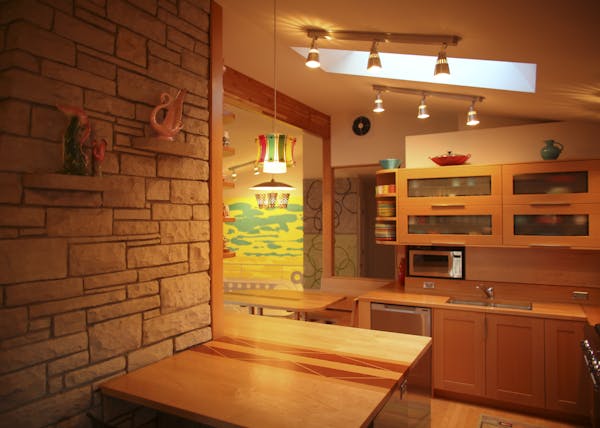Take your time
"Live with the floor plan you inherit" before undertaking a major remodeling, suggested Michelle Gringeri-Brown, founding editor of Atomic Ranch magazine. Most buyers of 1950s homes immediately want to open up the floor plan to create a great room. "But not every house should be blown open."
Think timeless
Some of the most popular products for kitchens and baths today, such as granite and glass tile, might not be the best choices when updating a home from the 1950s, according to Gringeri-Brown."As soon as you do a lot of shiny stuff and trendy finishes, you date-stamp your renovation," she said.
For kitchen countertops, she prefers solid colors and matte finishes, such as Formica or Corian. For baths, she suggests 4-inch-square ceramic tiles, the '50s standard. "You might think it's dull, but it lasts," she said. And if you have original ceramic tile in good condition, consider keeping it, even if the color isn't your favorite. The quality of tile used during the '50s was very high, Gringeri-Brown noted. Designer Laura Bischoff kept the pale peach tile in her own home's bath, but updated the colors around it, in a contemporary palette of graphite gray and burnt orange.
Think scale
Furniture size is critical when working with a rambler, said Bischoff. "Most of what's available at retail is bigger scale and too tall. Ramblers don't have high ceilings." If space is tight, consider curved and rounded pieces of furniture. "Square edges create margins and borders," she said.
Control clutter
Too much stuff is always a visual distraction, but especially in a modest, clean-lined midcentury home. For her own rambler, Bischoff designed custom cabinetry to add storage and architectural interest. "Cabinetry can work like magic," she said.
In heated western Minn. GOP congressional primary, outsiders challenging incumbent

Minnesota Sports Hall of Fame: A class-by-class list of all members

This retired journalist changed professional wrestling from Mankato

